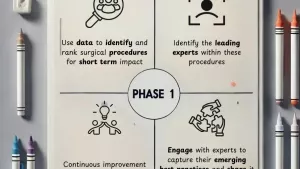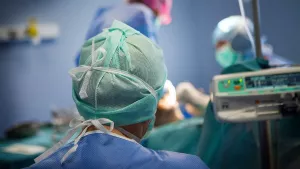Emerging best practices
Incision · · 5 min readSurgical teams worldwide face a critical challenge—the ability to learn from each other and collectively improve the medical field has diminished, as accessing and adopting the latest best practices and innovations can take years. At Incision, we are determined to change that. We believe that every surgical team should be equipped with the knowledge and tools to deliver exceptional care, no matter where they are. This vision forms the foundation of our new initiative on Emerging Best Practices. In this blog, we’ll dive deeper into why we embarked on this journey, how we aim to achieve it, and what we plan to do to make surgical excellence accessible to all.
At the heart of Incision’s mission is the belief that every patient deserves the highest level of care, and every surgical team should be empowered to deliver it. However, the reality is that surgical innovations sometimes take up 5-7 years to reach operating rooms. This lag, driven by lengthy processes like research, publication, and implementation, leaves many teams without access to the best, most effective emerging best practices available today.
We asked ourselves, “Why should life-saving innovations take so long to become standard practice?” The answer is clear: they shouldn’t. We believe that the gap between innovation and implementation can be bridged. By accelerating the dissemination of cutting-edge techniques and best practices, we can ensure that surgical teams worldwide are better equipped to improve patient outcomes, enhance team satisfaction, and promote sustainable practices.
At its core, it is about creating a world where geography, resources, and bureaucracy do not limit access to surgical excellence.
Traditionally, the path from discovery to practice is slow—requiring time-consuming steps like peer-reviewed publications, conference presentations, and in-person observations. While these channels are important for validation, they can delay the real-world impact of surgical innovations.
Incision is reimagining this process. Our approach bypasses these traditional bottlenecks, focusing instead on the direct and practical implementation of emerging best practices. Here’s how we believe it can be done:
- Data-Driven Identification: We leverage data analytics to identify and rank surgical procedures that can achieve the most significant short-term impact. This prioritization allows us to focus on areas where innovative practices can immediately enhance patient care.
- Collaboration with Experts: We are partnering with leading surgeons and medical experts to learn from their hands-on experience. By engaging these professionals early on, we can capture their techniques and translate them into actionable, real-world strategies for other surgical teams.
- Documentation & Sharing: We are documenting these best practices in a structured and accessible format. This includes surgical techniques, improvements in team dynamics, and optimized outcomes such as efficiency, clinical results, and even sustainability.
- Continuous Collaboration & Research: This project is an ongoing initiative. We are building a platform that is open to research, feedback, and collaboration from the global surgical community. We aim to identify the do’s and don’ts, explore how to expand to more procedures, and set realistic short-term and long-term goals. By contributing our ‘piece of the puzzle,’ we ensure that these insights are not only valuable to us but also available for others to use in their research.
By working directly with surgeons and medical professionals, we eliminate the delays that often plague the spread of surgical innovation, allowing teams to adopt these practices quickly and efficiently.
By focusing on the actionable steps above, we believe we can drastically shorten the time it takes for life-saving innovations to reach operating rooms.
In conclusion, at Incision, our mission goes beyond enhancing surgical practices—we are committed to making them accessible to everyone. By harnessing the power of data, expert collaboration, and continuous learning, we aim to build a world where every surgical team can perform at the highest level possible, no matter where they are. We invite surgeons, medical professionals, and innovators from around the world to join us in this groundbreaking initiative.
Follow us for weekly updates as we continue to share our progress. Let’s make surgical excellence the global standard.
Interested in contributing to this initiative? Contact us to get involved, or simply follow our journey through our blog and social channels. Together, we can revolutionize the future of surgery.
Sources:
- Barkun, J. S., Aronson, J. K., Feldman, L. S., Maddern, G. J., & Strasberg, S. M., for the Balliol Collaboration. (2009). Evaluation and stages of surgical innovations. The Lancet, 374(9695), 1089-1096. doi.org/10.1016/S0140-6736(09)61083-7
- McCulloch, P., Altman, D. G., Campbell, W. B., Flum, D. R., Glasziou, P., Marshall, J. C., & Nicholl, J. (2009). No surgical innovation without evaluation: The IDEAL recommendations. The Lancet, 374(9695), 1105-1112. doi.org/10.1016/S0140-6736(09)61116-8
- Dranove, D., Garthwaite, C., Heard, C., & Wu, B. (2022). The Economics of Medical Procedure Innovation. Read the full paper (PDF).







